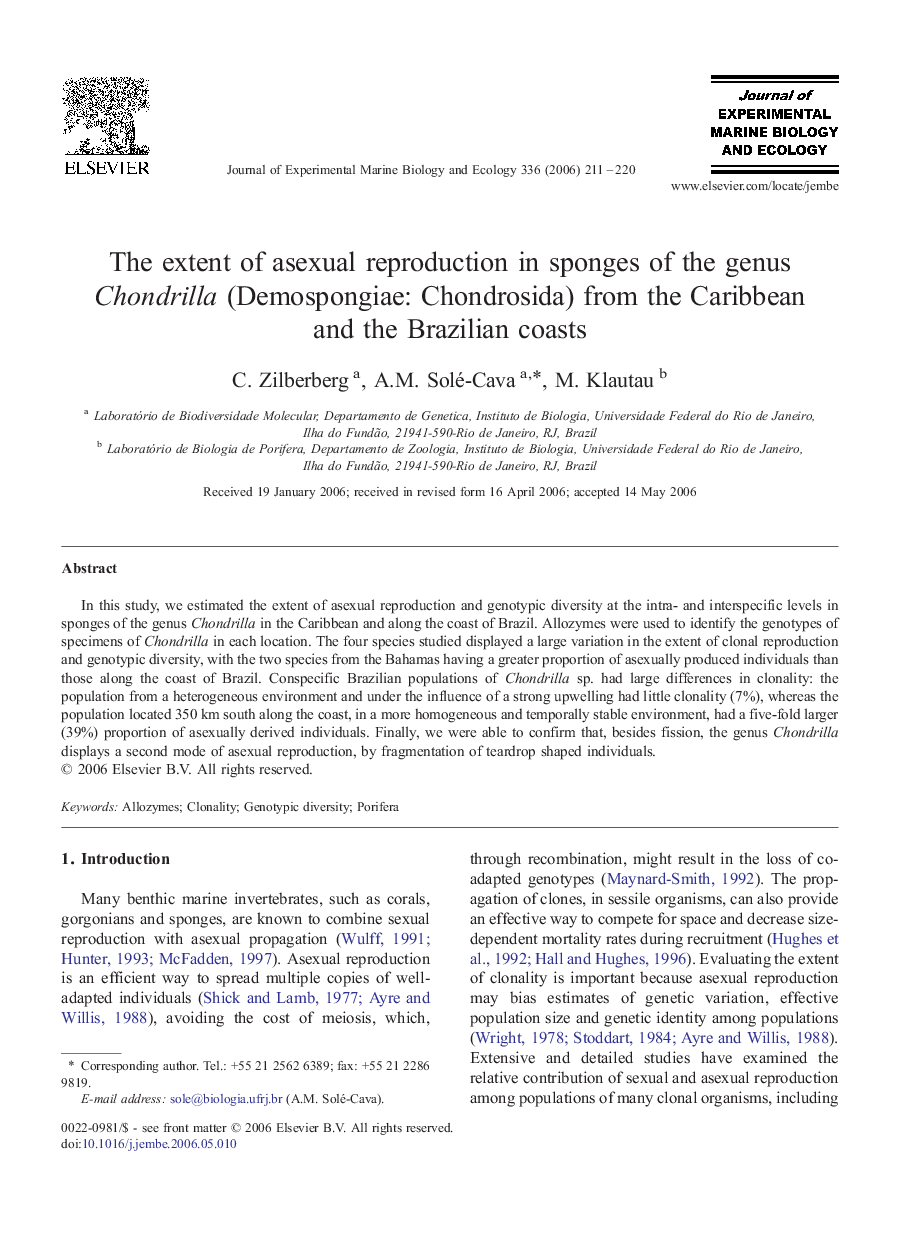| Article ID | Journal | Published Year | Pages | File Type |
|---|---|---|---|---|
| 4397953 | Journal of Experimental Marine Biology and Ecology | 2006 | 10 Pages |
In this study, we estimated the extent of asexual reproduction and genotypic diversity at the intra- and interspecific levels in sponges of the genus Chondrilla in the Caribbean and along the coast of Brazil. Allozymes were used to identify the genotypes of specimens of Chondrilla in each location. The four species studied displayed a large variation in the extent of clonal reproduction and genotypic diversity, with the two species from the Bahamas having a greater proportion of asexually produced individuals than those along the coast of Brazil. Conspecific Brazilian populations of Chondrilla sp. had large differences in clonality: the population from a heterogeneous environment and under the influence of a strong upwelling had little clonality (7%), whereas the population located 350 km south along the coast, in a more homogeneous and temporally stable environment, had a five-fold larger (39%) proportion of asexually derived individuals. Finally, we were able to confirm that, besides fission, the genus Chondrilla displays a second mode of asexual reproduction, by fragmentation of teardrop shaped individuals.
